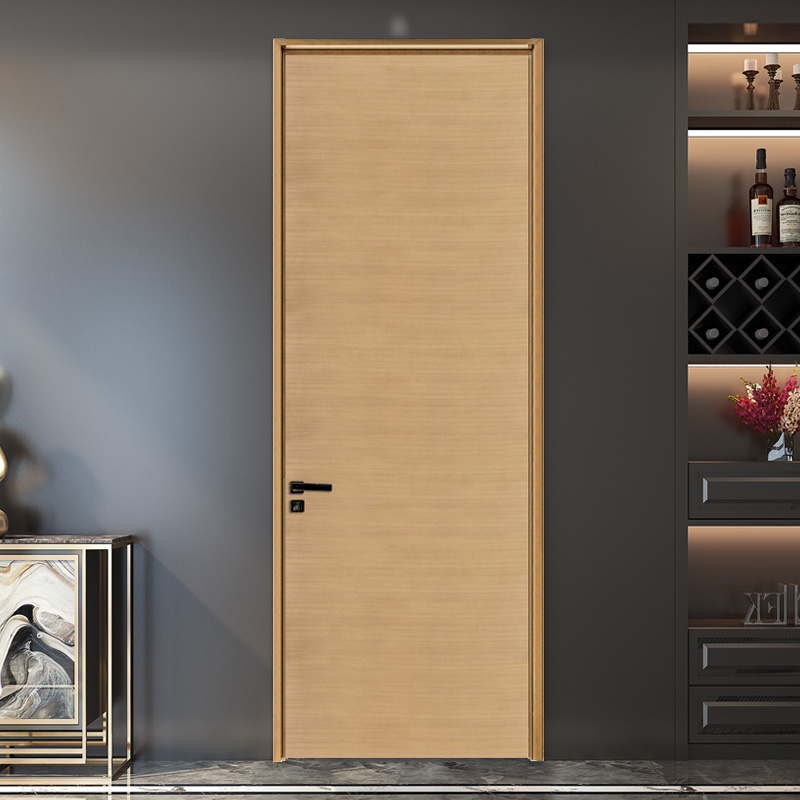Product Consultation
Your email address will not be published. Required fields are marked *

How does the surface finish of the Melamine Laminated Wooden Door resist scratches, stains?
Apr 22,2025
How does a Glass Wooden Door contribute to the overall energy efficiency of a building?
Apr 14,2025
How resistant is the PVC coating on a PVC MDF door to scratches, stains, and fading over time?
Apr 07,2025
To preserve the painted finish of a veneer door, here are some essential maintenance steps:
Regular Cleaning: Dust and debris can accumulate on veneer doors, impacting their appearance and longevity. Use a soft, lint-free cloth or microfiber towel to gently wipe the door surface regularly. This removes surface dust and prevents it from settling into the paint or veneer grain, which can be difficult to clean later. For more stubborn dirt or smudges, lightly dampen the cloth with water or a mild, pH-neutral soap solution. Avoid excessive moisture, as it can damage the veneer or cause swelling.
Avoid Harsh Chemicals: Harsh chemicals like ammonia, bleach, or abrasive cleaners can strip away the protective layers of paint and damage the underlying veneer. Stick to gentle cleaning agents that are specifically formulated for painted surfaces or wood. Always test a small, inconspicuous area of the door first to ensure compatibility and prevent any adverse reactions.
Immediate Spill Cleanup: Accidental spills should be addressed promptly to prevent liquids from seeping into the paint or veneer, which can cause staining or warping. Use a soft, absorbent cloth to blot up the spill immediately, rather than rubbing, which can spread the liquid and damage the finish. If necessary, use a mild soap solution to gently clean the affected area, followed by drying with a clean, dry cloth.
Protect from Scratches: Veneer doors are susceptible to scratches and dents from everyday use. Place felt pads or furniture protectors under items that come into contact with the door, such as keys, bags, or furniture. Avoid dragging or sliding items across the door surface, as this can leave permanent marks. Consider using mats or rugs at entryways to minimize dirt and debris that can scratch the door surface.
Avoid Direct Sunlight: Prolonged exposure to direct sunlight can cause the paint on veneer doors to fade or discolor over time. Use window treatments such as curtains, blinds, or UV-filtering films to protect the door from harmful UV rays. Rotate furniture or use decorative elements strategically to minimize direct sunlight exposure on the door surface.
Touch-Up Paint: Keep a small supply of touch-up paint that matches the original color and finish of the door. Minor scratches, chips, or areas where the paint has worn thin can be repaired by lightly sanding the affected area with fine-grit sandpaper. Clean the area thoroughly to remove dust and debris, then apply a primer if needed. Apply the touch-up paint in thin, even layers using a small brush or applicator, allowing each coat to dry completely before applying the next. This helps blend the repaired area seamlessly with the rest of the door surface.
Climate Control: Maintain a stable indoor climate to minimize fluctuations in humidity and temperature, which can affect the stability of both the veneer and the paint finish. Use a humidifier during dry seasons to prevent the veneer from drying out and cracking, and use a dehumidifier in humid climates to reduce moisture levels that can cause swelling or warping. Avoid placing veneer doors in areas with extreme temperature changes, such as near heating vents, radiators, or air conditioning units, which can cause the wood and paint to expand and contract.
GA-01 Silver Pear Wood Veneer Painting Room Door

Your email address will not be published. Required fields are marked *











